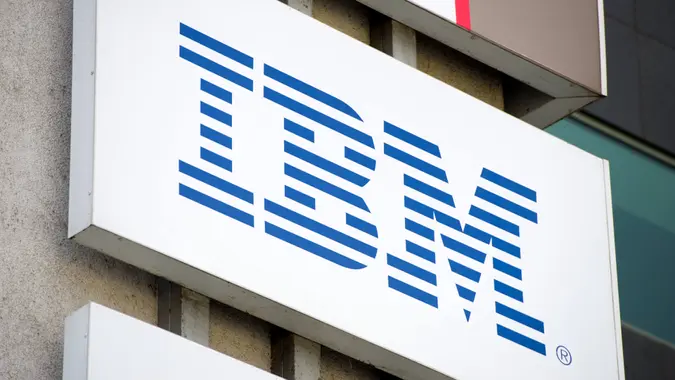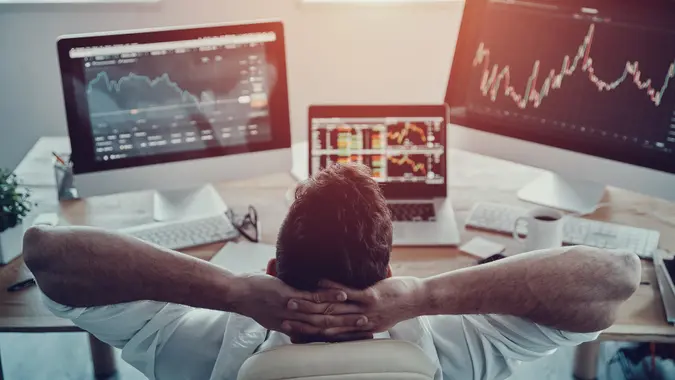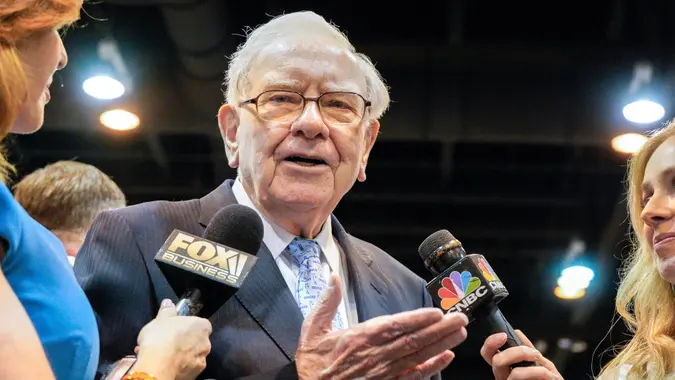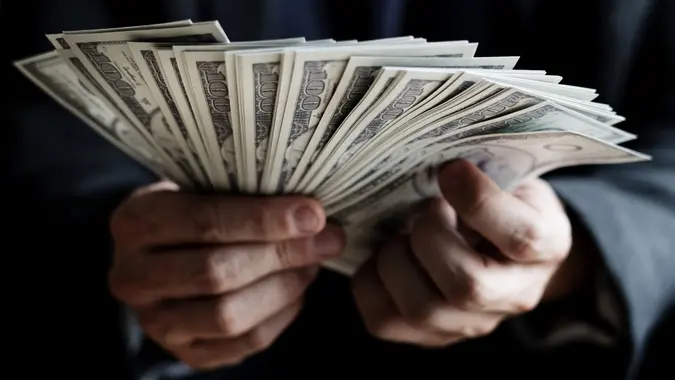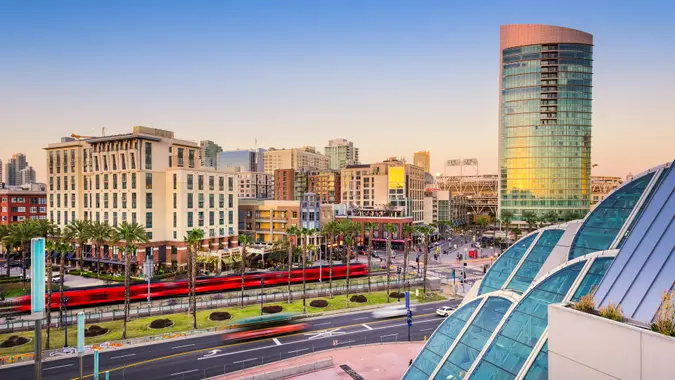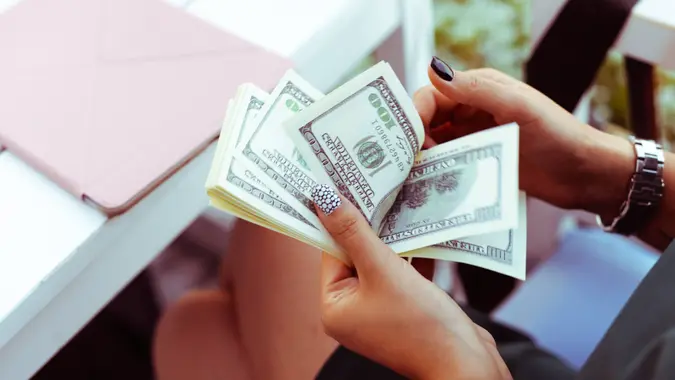‘Rich Dad’ Robert Kiyosaki Explains Why Bitcoin Is the Future of Money

Commitment to Our Readers
GOBankingRates' editorial team is committed to bringing you unbiased reviews and information. We use data-driven methodologies to evaluate financial products and services - our reviews and ratings are not influenced by advertisers. You can read more about our editorial guidelines and our products and services review methodology.

20 Years
Helping You Live Richer

Reviewed
by Experts

Trusted by
Millions of Readers
Robert Kiyosaki, the bestselling author of “Rich Dad Poor Dad,” said during a recent radio show that while he thinks Bitcoin is a “strange animal,” he also believes it’s the future of money.
This comes amid the asset’s recent bullish run, with Bitcoin breaching the $50,000 ceiling a few days ago.
Bitcoin Is Beyond Government Control, Per Kiyosaki
According to Kiyosaki, one of the most attractive traits of the asset is that it is outside of government control, making it appealing in a climate of diminishing trust in traditional financial institutions and increasing appeal of decentralized assets, he said on the Feb. 7 show.
Yet, Kiyosaki also stressed the importance of educating oneself about Bitcoin before investing, noting that he took a cautious approach by gradually accumulating a position in the asset.
His guest, Pomp Investments founder Anthony Pompliano, further argued that what also makes Bitcoin valuable is that it has sound money principles. Pompliano would go on to state, on Feb. 12 via CNBC, that Bitcoin has become “Wall Street’s favorite asset” recently.
Bitcoin Crosses $50,000 Yet Again
As stated earlier, the asset hit $50,000 earlier this week — a feat which hadn’t happened since 2021 and which represents a “psychologically important milestone,” according to Craig Erlam, senior market analyst, UK & EMEA, OANDA.
Bitcoin has been buoyed by several drivers lately, namely the approval by the Securities and Exchange Commission (SEC) of spot Bitcoin exchange-traded funds (ETFs) on Jan. 10. This was deemed by many to be a landmark decision, which came after many years of anticipation and stalling.
“The post-ETF sell-off in Bitcoin didn’t last very long and a break above $50,000 will be widely viewed as a significant milestone in its comeback,” said Erlam. “It’s been a rough couple of years but the ETF approvals were an important achievement that’s helped propel the price higher. Many will now be hoping it goes from strength to strength, perhaps buoyed by the halving event in April.”
In fact, one month after approval, spot Bitcoin exchange-traded funds (ETFs) have amassed a whopping $10 billion in assets under management, according to CoinMarketCap.
This is also a driver Kiyosaki noted during his show, saying that the ETFs have “opened up demand,” which in turn could raise the price of Bitcoin.
“When you went to the ETF the demand went through the roof so that’s why people are calling for $300,000 Bitcoin, $500,000 Bitcoin,” he said.
On Feb. 13, Bitcoin was hovering around $49,000 and was up 125% in the past year — a reality which has triggered a very bullish view from many experts.
For instance, Evander Smart, founder of Bitcoin University, argued that the best investment — “the smartest move on the chess board” — for 2024 is Bitcoin.
“Last year, it generated a 157% ROI, and this year should prove even more lucrative for holders of the digital asset,” he said.
 Written by
Written by  Edited by
Edited by 




